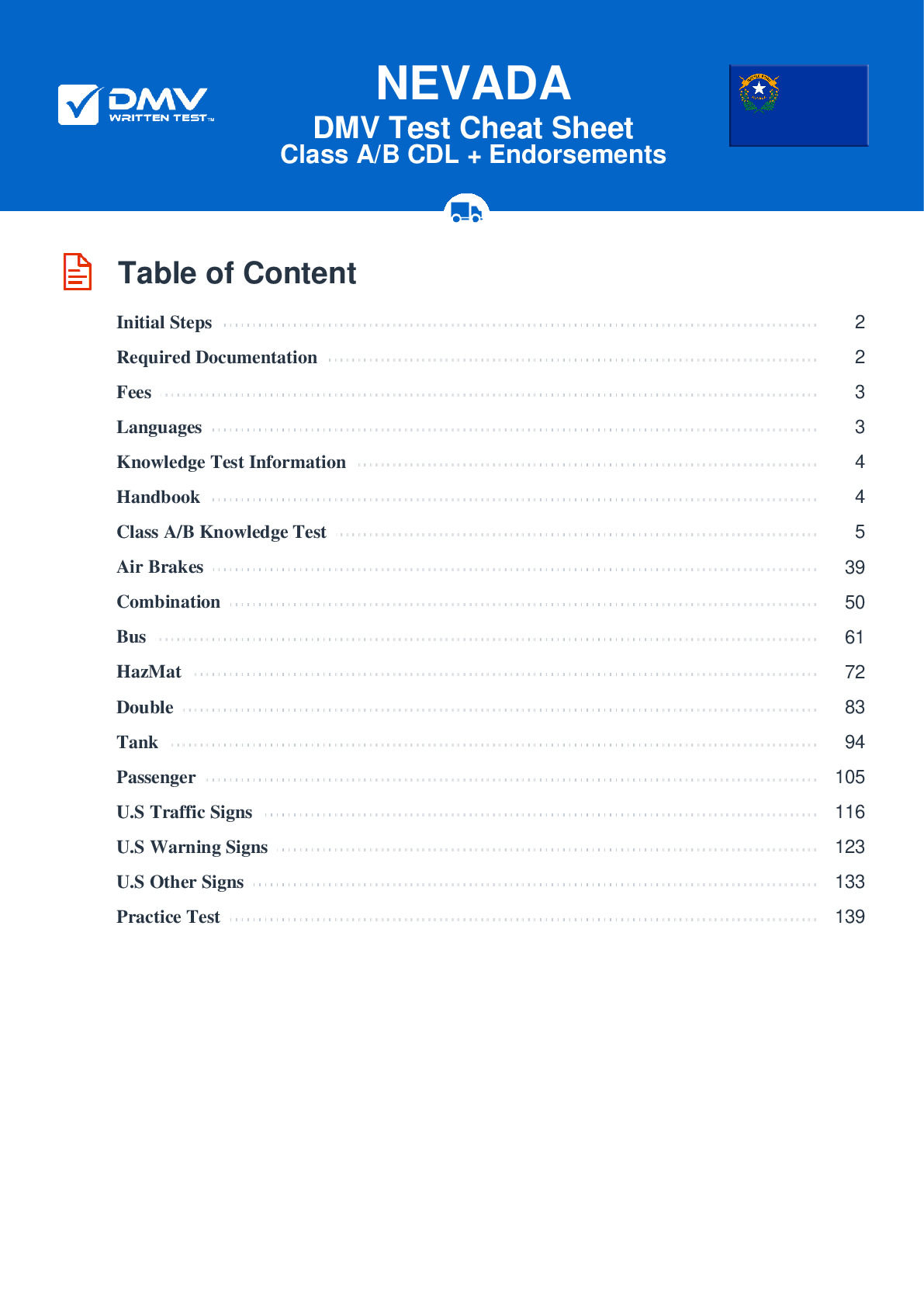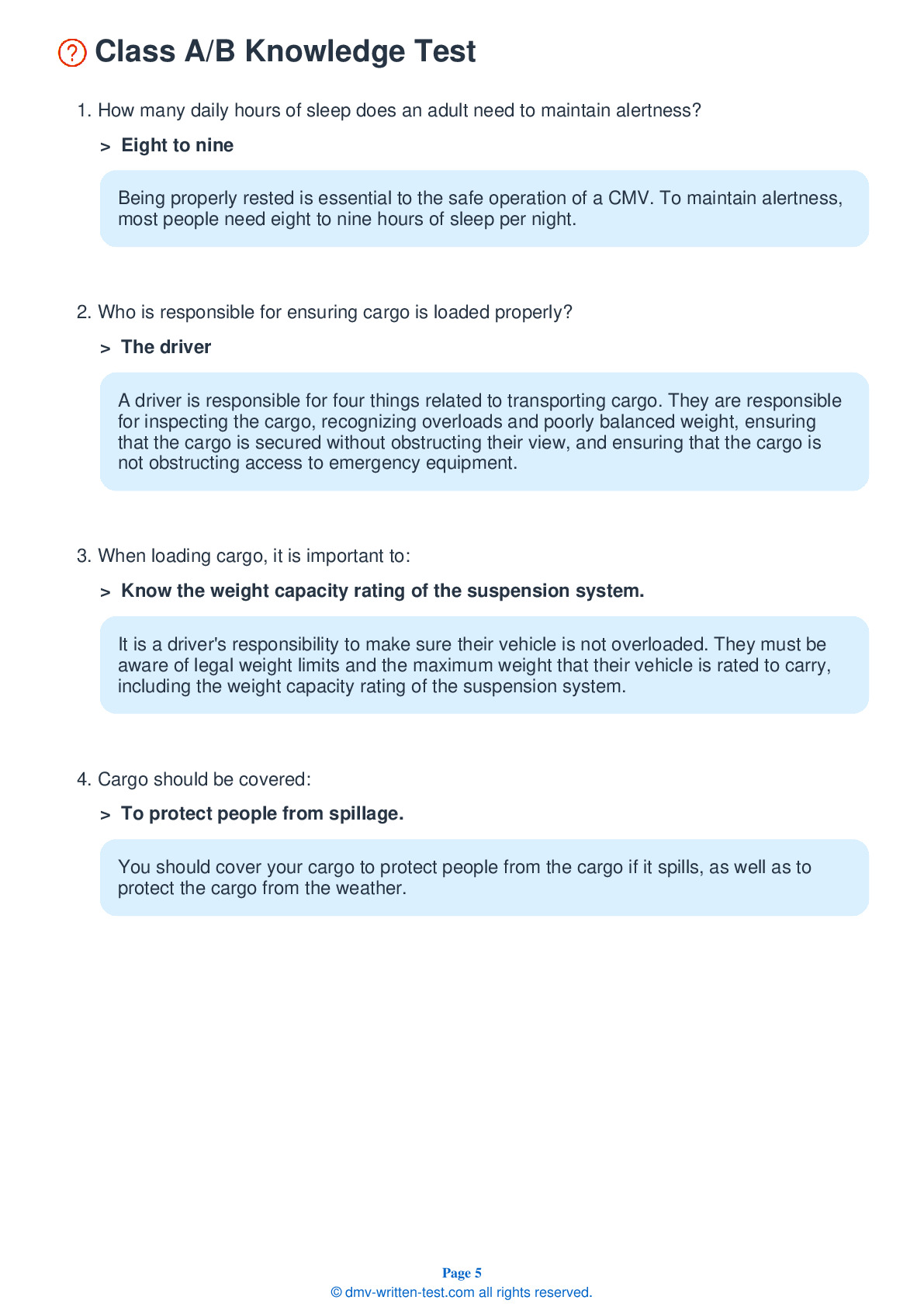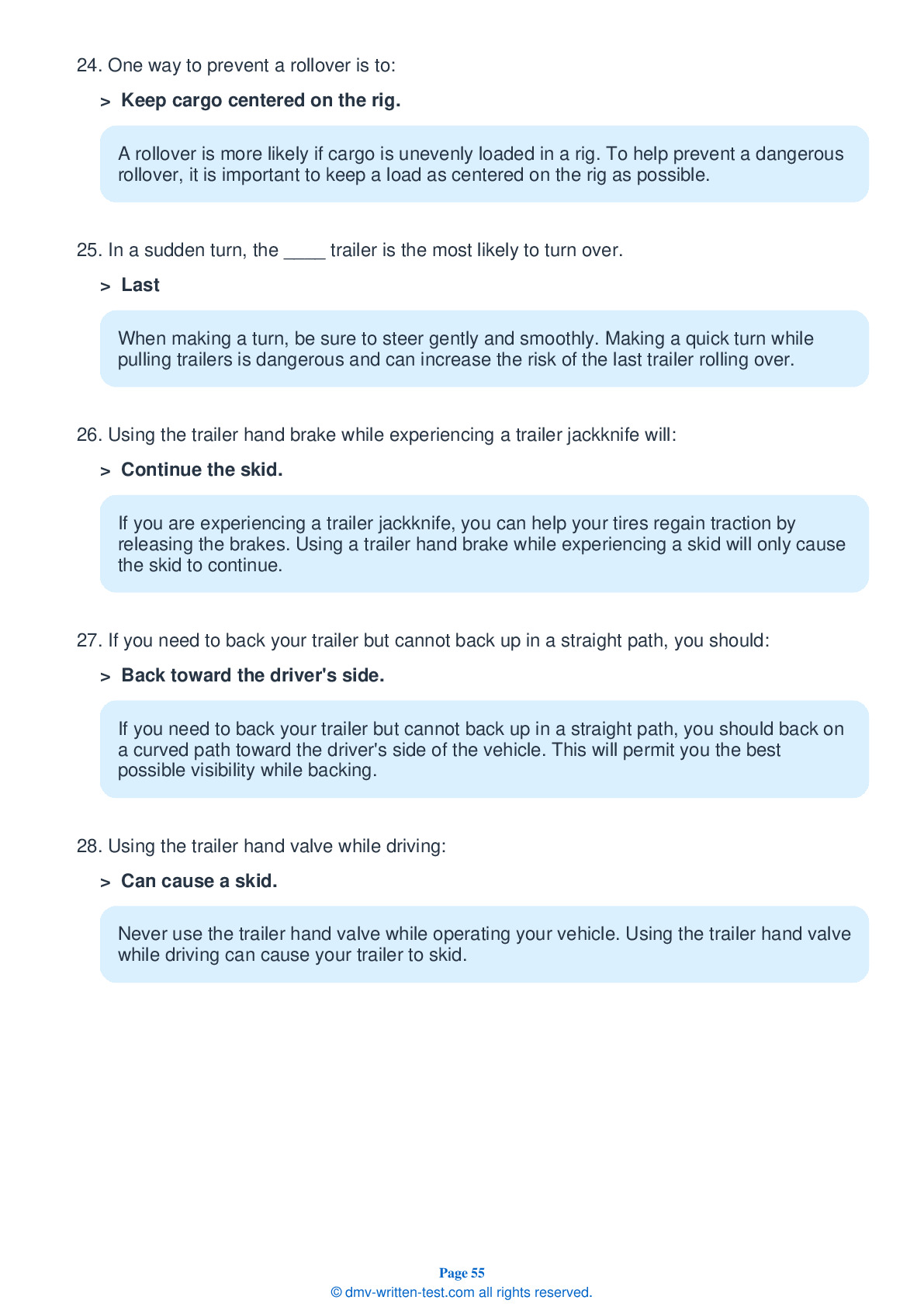Combination
All applicants who are applying for a Class A CDL should be prepared to take the Combination test. This test covers information found in Section 6 of the Nevada Commercial Driver License Manual. Section 6 provides the information needed to safely operate tractor-trailers, doubles, triples, and straight trucks with trailers. The test is made up of 20 multiple-choice questions, and applicants will need to correctly answer a minimum of 16 questions to pass. The Combination test is not a replacement for the Double/Triple endorsement test.
Number of Question
Passing Score
1. During a trip, landing gear should be:
Explanation
Landing gear, or trailer supports, should always be completely raised before a vehicle is driven. Landing gear that is not entirely raised could catch on railroad tracks or other hazards on the roadway.
2. A loss of air pressure in the emergency line will cause:
Explanation
The emergency air line controls the emergency brakes on a combination vehicle. A loss of air pressure in the emergency line will cause the emergency trailer brakes to activate.
3. What does an Anti-Lock Braking System (ABS) do?
Explanation
An Anti-Lock Braking System (ABS) helps prevent wheel lockup during hard braking. If ABS detects impending lockup, it reduces braking pressure to a safe level.
4. When backing up to couple a trailer, you should position the tractor:
Explanation
When backing up to couple a trailer, you should position the tractor directly in front of the trailer. Trying to couple while backing at an angle could cause the trailer to move and the landing gear to break.
5. Driving a combination vehicle ____ than driving a single vehicle.
Explanation
Driving a combination vehicle usually requires more skill than driving a single vehicle. Combination vehicles are generally longer and heavier than single commercial vehicles.
6. Rollovers happen when:
Explanation
Rollovers happen when a vehicle is driven too fast. To reduce the risk of rollover, make sure the weight of cargo is loaded low to the ground, and that you take turns and curves slowly.
7. Keeping cargo low can:
Explanation




